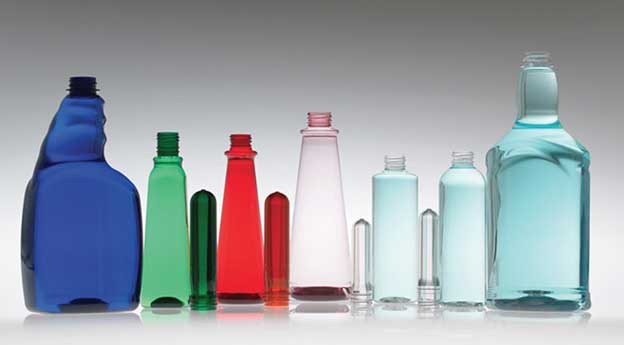A wide variety of materials are used to produce packaging and among them, PET and PVC are commonly used products. PET or polyethene terephthalate is commonly used for thermoforming. Because of its flexible properties, it can easily be moulded into the desired shape.
It acts as a strong barrier against resistance against moisture, water, air and other environment factors. It gives strong protection against outside tampering or other elements.
Benefits of using PET
Durability – Over other packaging materials, PET is more rigid. It gives a strong protection against UV rays, which is an important factor when it comes to the packaging of food and beverages and other consumables. UV rays are harmful for the consumables packed inside the packet and it is very important to give protection so that no harmful reactions take place inside.
Versatility – Plastic can be easily moulded into any shape and can be used for ample of applications. Even in packaging, it can be moulded into many forms; bottles, jars, thermoforming, etc.
Processing – In comparison to other packaging techniques, processing PET is much easier. It’s a complete automatic assembly line with minimum human interference. Thus, the chances of error are very less. But yes, the manufacturer must take good care while using preforms. There should not be any defect in it.
How to Test Quality of PET Packaging?
Various tests can be performed to check the quality of PET packaging and for that, Presto offers a wide range of PET and Preform Testing Instruments. Depending upon the intended application, the machine can be chosen. Let’s take the example of PET bottles. Test-tube sized preforms are available, which are blown into a full-sized bottle. These bottles are further filled with liquid.
Preform Testing – it is very important that testing starts at very initial stage of the manufacturing. Polariscope is the device which is used to determine the defects in the preforms. It is an optical device and works on the principle of refraction of light. Usually light doesn’t refract in the PET medium when tested under normal conditions. In the case of any defect in the preforms, the light would get refracted doubly and thus creating different uneven patterns of light. This device is used for PET preforms and for glass, sometimes. No report is generated in this test. The operator needs to do a visual inspection to check for any defects.
Top Load Testing –Once the preforms become full blown bottles, these are sent towards the filling line. If defects highlighted by Polariscope remain unnoticed, a small defect will become large after blowing air into it. Due to this the buckling may happen when load is subjected on bottle. It is very important that bottles should not buckle down due to load. Or in the warehouse, when bottles are stacked, buckling should not appear. A top load testing machine is used to determine the load bearing capacity of the bottles. This machine applies a lot from the top on the test sample to check how much force is required to deform the sample. The force measured is displayed on the screen. This measurement can be taken as reference load for the sample.
Wall Thickness Gauging – To determine the even thickness of the wall of the bottle, Magna-Mike 8600 can be used. This machine comes with a probe and a target ball, used to measure the thickness of any non-ferrous object. The small target ball is placed inside the bottle and probe scans the wall. Due to magnetic effect of the probe, the ball moves in a sync with the probe tip. The tip has a hall effect sensor, that calculates the distance between the tip and ball which is equivalent to the thickness of the wall.
Sectional Weight Measurement – Hot Wire Bottle Cutter is used to measure the sectional weight of the bottle. This device has a 2-3 wires that are heated up to a specific temperature, hot enough to cut the bottle. Then these wires are made to pass through the bottle cutting it into the equal section. Each section is made to weigh individually. This test is important to determine the balancing capacity of the bottle.
Torque Testing – How much force is required to open the bottle packing is determined by the torque testing machines. In this machine, a capped bottle is placed on the rotor assembly with anti-slip pegs. And the cap is held by the fixture on the top. The rotor assembly will rotate the bottle until it opens. The force applied is displayed on the screen. This device is available in the analogue and digital model.
Vacuum Leak Testing – When the final product comes out from the production line, it should not have any defect. Otherwise, it would not reach to intended user in intact condition. Especially, in carbonated drinks packaging; it is very important to test the vacuum leak condition of the bottle. In this test, the bottle is placed in the vacuum kit and prescribed vacuum is created inside the cavity. In dry vacuum test, if bottle shrinks and does not retain its shape back, it’s faulty.
